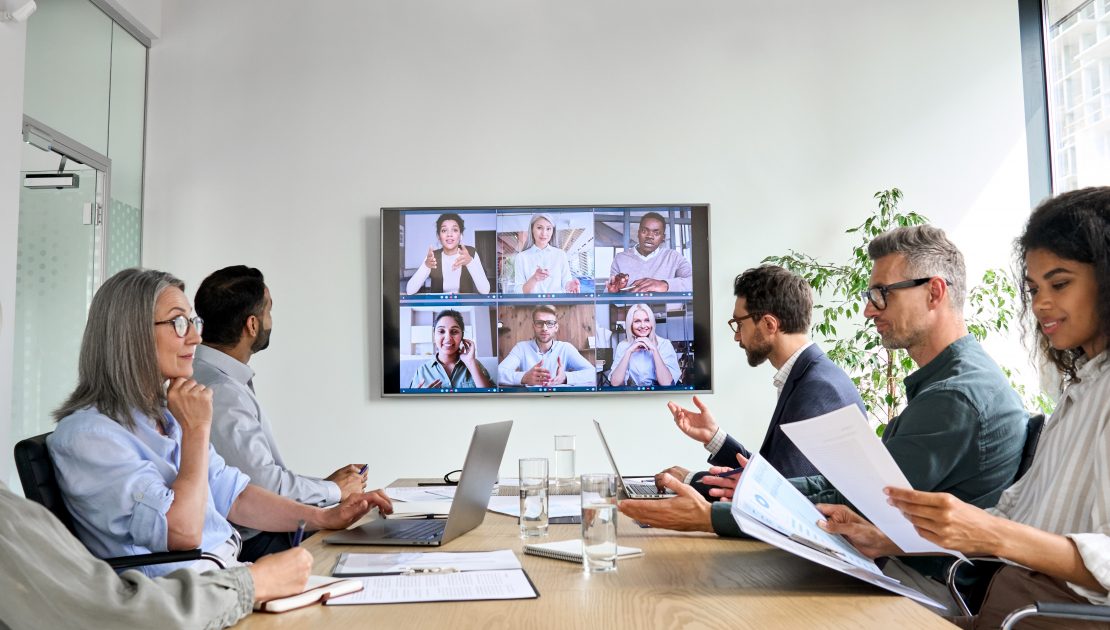
- July 20, 2022
- Ela Stilwell
- Podcast
- No Comments
The topic of meetings is a reoccurring one in project management. We’re going to look at meetings from a different perspective than you may be used to, so think back to a recent meeting you attended (or led) as we work through some one-word questions: Why? What? Who? and How?
Bill Russell, the legendary Boston Celtics basketball player, says that the magic to a great meeting is all of the work that gets done beforehand. It’s the preparation that sets the stage for a productive meeting. Without preparation, we can waste everyone’s time and create a lack of trust. So let’s start that preparation stage with a simple question.
Our blog posts are a condensed version of our podcast! Listen to the episode linked above to hear Rod take you through this content.
Why are you here?
We focus on one prominent “why” in the meeting context: why are you specifically attending.
If you’ve ever sat through a meeting and partway through said, “why am I here?” I would challenge you to ask that question before you ever got to the meeting, before you put aside other things and missed other priorities because you had to get to this meeting.
When you get that meeting invite, we suggest you ask why you are important at that meeting. If there’s no good answer, you may need to find a way to get out of the meeting politely. We’re not inciting people to riot here! But we need to consider meetings from our personal perspectives. If you know what you could bring of value to the meeting, you can prepare to make the meeting beneficial to you and the business.
Some questions to ask yourself include:
- Why me?
- Could somebody else go in my stead?
- Is there someone more appropriate to be at this meeting?
A tough thing to recognize is that you may have, at one time, been required at that meeting, but you may not be anymore. As the project moves from the pre-feasibility stage through to construction and all of the steps along the way, your involvement may change.
Kids show up because they’re told to show up. But as we become adults, we actually need to create a link between why we’re here and what we’re going to get out of this.
If you’re interested in digging into your “why,” we recommend Simon Sinek’s Start With Why.
What do you need to accomplish?
Once you’ve determined that you are needed at the meeting, we suggest you ask what the meeting seeks to accomplish. This is the “why” of the meeting itself.
In determining the meeting’s “what,” you may decide that you don’t have to be at the meeting after all. Realistically, part of the “what” comes down to “how much is this costing us to be sitting around?”
In determining the “what” of the meeting, we may ask the following:
- What is it we’re trying to accomplish?
- What do we need at the meeting to accomplish our objectives (data stats, reviews, documents)?
- What outcomes would we like to see at the end of this meeting?
On the podcast, Rod puts the cost of meetings into perspective when he shares his experience from his time working at one of Canada’s Big Five banks:
“When I worked for a bank for many, many years, if you wanted to spend more than $300 you had to have approval and purchase orders and all those things. And I bet it’s the same in your project. There’s a cap, but you can bring 10 people together for half a day. That might cost the business $15,000. But you didn’t have to get permission for that. So you went through hoops for $300, but you didn’t have to go through hoops to spend $15,000 and potentially frustrate people, create challenges and so on.”
Who are the right people?
Although similar to the “why,” the “who” has us look around the table. Who are the right people for the right topics at the right time?
In conducting meeting audits for clients, Rod’s general observation is that individuals who don’t say a single word in a two-hour meeting likely did not have to be there. They may be better served by reading the minutes and action statements
If we truly want to be effective in projects, if we truly want to cut those hard costs, we need to make some of the hard decisions that require soft skills and build enough trust with people to sit down and un-invite them.
In a progressively more virtual world, we can invite and un-invite participants with the click of a button. Participants can log on for 15 minutes and then be gone!
Understanding the “who” doesn’t make it easy to decide who should be there. Sometimes there are people who are going to be there because they’ve always been at these meetings, and you need to have a tough conversation about the value they bring. So be gentle as you move into the who.
How?
Once you’ve ensured the right people will attend and discuss the right things, the “how” is the final step.
The first question in today’s world is whether it will be in person or virtual. Factors including the physical engagement needed, the location of the attendees and the time required are all important to consider.
If you spend time getting ready for the meeting, being clear on why you’re having a meeting, understanding what resources would be the absolute best, determining who absolutely the right people are to be around the table, and who the wrong people are that aren’t in the meeting, And you’ve looked at how to make it successful. You’re already way ahead of the vast majority of meetings.
If you’re meeting virtually, some unique considerations must be addressed before you meet. These may include:
- The time length and possible breaks if the meeting is long,
- Whether cameras are required to be on,
- Whether breakout rooms, polls, screen sharing privileges, or other virtual tools are needed.
All of this preparation is vital so that the time you spend in a meeting is highly successful.
For more on choosing the why, what, who, and how, we at Uni-Signal love and recommend Patrick Lencioni’s Death by Meeting.
